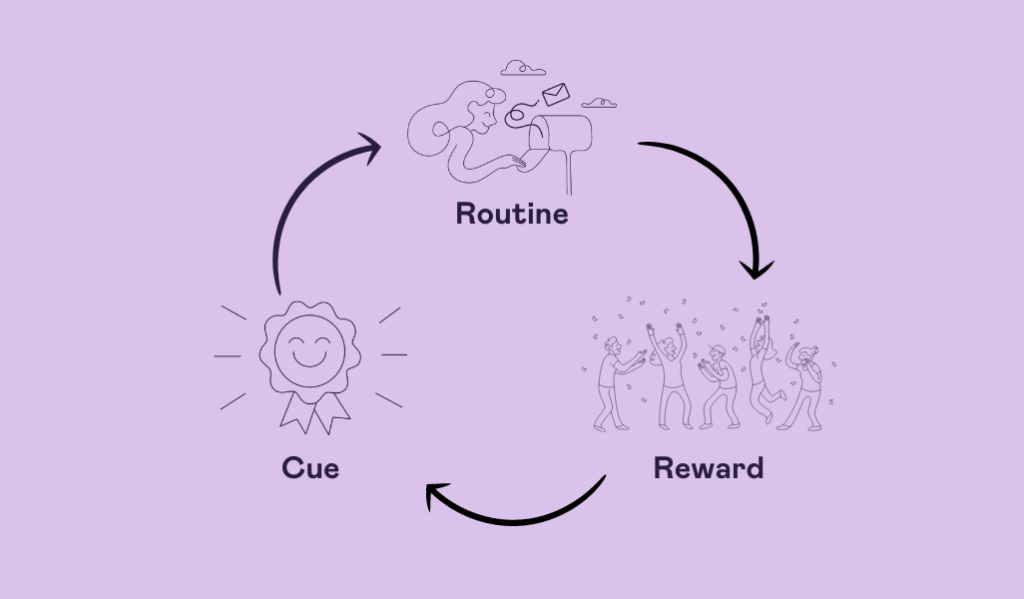Changing employee behaviour isn’t easy. Even if you have built an organisation with strong values and a passionate team, implementing the right behaviours needs the right foundation. If you want to improve employee behaviour, you must start with your company culture.
If your company isn’t adopting the habits of high-performing teams, you’re not alone. The best way to solve it is to dig into what’s right at the heart of your leadership style and how it matches up with your core beliefs.
Why is Improving Employee Behaviour Difficult?
How often have you set goals, promised yourself you’ll eat better, work harder or be a better person? We’re all guilty, but are broad resolutions like these enough to affect behaviour change?
It’s easy to pinpoint those habits we want to build or break – the difficult part is putting in the work to help us reach our goals.
As a manager or leader, you have major goals for your team and will implement targets to help get them there. However, you must practice what you preach for your team to follow suit.
Trying to get an individual to change their behaviour can be a struggle, let alone attempting to get an entire office to change. Picture this: the marketing and sales department has had a long-standing feud since the beginning of time. A few icebreakers and a team-building day aren’t exactly going to solve the problem.
If only one person in the team meets their monthly targets, one motivational speech won’t do the trick. Here are a few reasons why habits can be difficult to change:
1. Uncomfortable Feelings
Fear or discomfort is typically the number one reason why people might resist change. This is because relearning habits that have taken years to perfect can make individuals question their competency and adequacy. There will be a doubt in their mind, asking whether or not they’re up to the task.
Will this change be followed by other big changes in a few months? Will they find a new piece of technology to replace me? Sometimes workers will feel different emotions when faced with change, making it impossible to understand what exactly is driving the change and why it’s necessary.
2. Appreciation
We have said it before, and we will say it again, employees are motivated by appreciation and recognition. Your team are not loyal to the company because of the nice paycheck at the end of the month. Loyal employees come from whether or not they feel a manager will recognise their efforts. If it’s overlooked, they aren’t likely to jump on board with any changes you propose.
The good news is that we can form good habits and break bad ones when the conditions are right. The key is recognising those positive and negative tendencies – and knowing how to harness them.
Stasis is the Enemy of Progress
At a personal level, you can suffer the negative effects of someone else’s behaviour, even if you’re not the direct target. But at an organisational level, poor behaviour can have a tangible impact on profitability.
Missed objectives and declining productivity result in diminished profitability. Sick days might increase as team members try to escape the poor behaviour or are sucked into it. Another possible consequence may be high staff turnover.
Behaviour change in organisations can be challenging because so many people are involved, and it needs to be managed fairly, sensibly and positively. Behaviour change is very important to boost morale and uplift the company culture. If your employees are happy due to more positive behaviours, they are likely to be more productive.
How to Improve Employee Behaviour from the Top Down
As a manager, you must be able to facilitate behaviour changes when you notice things that need changing, starting with yourself. Imagine you notice two teams that really should be collaborating closely, working in silos instead. You can start a positive change in behaviour by setting up a regular meeting between the team leads, posting regular thanks for the other team’s hard work on your recognition platform, or even a Boost to encourage appreciation across teams.
It’s easy to sit back and do nothing, but you need to take action before unwanted behaviours jeopardise productivity and harm morale.
1. Get Your House in Order
Changing habits is a big ask. They tend to be well ingrained. How do you feel if you run out of milk and have to skip your coffee? Or a strike means your regular bus is cancelled?
When it comes to making changes, it’s about starting small and finding ways to build them into the everyday. Once you pay attention to the behaviours that affect your work and mood and how those behaviours can also affect everyone around you, you’ve taken the first step.
2. Bridge that ‘Knowing-Doing Gap’
In the ’90s, Jeffrey Pfeffer and Robert Sutton wrote a book that pinpointed a common stumbling block for businesses – the Knowing-Doing Gap that happens when our actions don’t match our ideals.
It’s an easy gap to fall into, especially when you have big dreams for your company and ambitions that far outstrip current capabilities.
Luckily, it’s a gap you can bridge if you’re willing to put in the effort. You have to stop theorising and start doing.

Coach your employees
As a manager or leader, dedicating time to coaching your employees will make them feel encouraged, supported and valued and that you are invested in their success.
Coaching has to be an ongoing process and requires consistent feedback, which is extremely useful in changing behaviours. Not only does it help change behaviour, but it also helps employees move their careers forward, increasing productivity and output.
3. Inspire Employees
Negative behaviours can develop from monotony and a lack of inspiration. Spend time keeping your employees inspired and excited about the work they are doing.
People may not immediately care too much about getting more traffic to a landing page, or fixing one more software bug, but when you can connect their work to a deeper motivation, you will see team happiness and positive behaviours improve.
4. Start an Appreciation Trend
Again and again, we see that what employees want is to feel appreciated. Money, perks, holiday time – all of those are essentials – but alongside them, there should be a way to regularly and routinely recognise the effort and hard work.
Employee recognition platforms like ours make it easy to build appreciation and recognition into your ecosystem. With our fun and easy Boosts, you can start everyone off on the right path and encourage your team to share the moments that matter.
Set off a chain reaction that builds better habits for everyone.
5. Be Authentic
Want your team to know that when you’re talking about their well-being or the company’s ideals, they’re able to take what you’re saying at face value? Then let your real feelings shine through while also prioritising psychological safety in the workplace, of course.
We’re not recommending screaming matches in the boardroom when a deal falls through, but we are saying that we’re all human – and it’s ok for our language to reflect that.
A little conflict can be healthy. It’s sensible to say when you’re disappointed or to talk frankly about things like employee burnout. Being realistic about expectations makes work all the more valuable.
6. Get Everyone Involved
If you want habits to change, then according to Wendy Wood, PhD, a psychologist at the University of Southern California (USC), you need to think about context. Wood explains that the environment we’re in can have a big impact on our habits. Change the context and behaviour will follow.
What does that mean when you take it into the workplace? It means creating a space where people feel like good habits are expected, rewarded and recognised. It means changing the everyday fabric so that the key Moments that build a better workplace are shared, talked about and celebrated.
7. Create Collective Goals
When implementing behaviour change, work with the whole team rather than focusing on one individual. Having clear goals set for everyone will guide your employees to change their behaviours and help keep them working towards the same objective.
Change initiatives are most successful when everyone is fixed on the same end goal. Hold group training sessions or meetings to help reinforce the objectives and behaviours you want to see changed. \
8. One Step at a Time
Don’t be the person who tries to change everything at once – focus on one change at a time. Working slowly is also key if you want to see effective behaviour change. Give your employees enough time to go through each stage of behaviour change to ensure changes become permanent.
9. Create Feedback Loops
You’ve nailed your values, changed how you talk to your employees, matched your business values to your actions, and looked at how to create the right environment for change. Now it’s time to get motivated.
Willpower is rarely enough to shift habits. How often have you decided to skip a chocolate bar only to cave a few minutes later? So why leave your employees to try and find their own motivation?
For good habits to take root, you need to build the sort of positive feedback loop that encourages a habit to become ingrained organically. It starts with a cue that prompts an action, which should then be rewarded. Like this:

When the cue is clear and the reward is worth it, your team can start incorporating new behaviours into their routine – and be happy about it. If you’re looking for some help working out what those cues could be for your team and how to start rewarding employees, you’re in the right place.
Mo provides cues that trigger the routines that form new habits, and we do it in a way that suits you, your business and your culture. Our Boosts help build high-performance habits organically, by encouraging you or anyone in your team to share weekly wins, results, employee appreciation, or anything you’d like really.
Transform your culture with Mo

- Improve employee engagement scores
- Reduce employee churn
- Build a collaborative culture
Improving Employee Behaviour: Key Takeaways
- Improving employee behaviour starts with building a strong company culture that aligns with your core beliefs and leadership style.
- Resistance to change often stems from uncomfortable feelings like fear or doubt, as well as a lack of appreciation for employees’ efforts.
- To drive behaviour change from the top down, managers should lead by example, bridge the “Knowing-Doing Gap,” coach employees consistently, inspire them, foster a culture of appreciation, be authentic, involve everyone in the process, set collective goals, take incremental steps and create feedback loops to reinforce positive behaviours.




